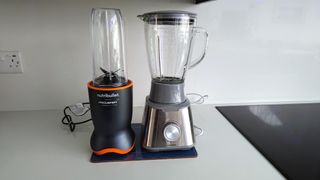Home
Explore Home
Latest about Home

How to keep your Christmas cactus producing gorgeous blooms every year
By Kaycee Hill published
Learn simple year-round Christmas cactus care tips for watering, light, and temperature to ensure healthy blooms every holiday season.

I got this $50 coffee accessory — and it's completely transformed my espresso
By Erin Bashford published
I'm an ex-barista, and now I spend hours every week testing espresso machines. This accessory is the barista's secret recipe for perfect espresso every time.

Pro cleaner reveals the 5 common mistakes you're making when cleaning the bathroom with bleach
By Grace Dean published
These easy steps will get you the best results

Best refrigerator sales and deals in January 2026
By Millie Davis-Williams last updated
From Home Depot to Lowe's, here are the best refrigerator sales and deals available now.

CES 2026 Preview: 6 biggest trends to watch
By Tom's Guide Staff last updated
The Tom's Guide team will be at CES 2026 covering all the latest in tech; ahead of the show, these are the biggest trends and gadgets we expect to see.

IKEA is selling a tiny new USB-C charger for just $4 — and I'm buying one for every bag
By Cynthia Lawrence published
I’ve just discovered IKEA’s new tiny 20W USB-charger that is perfect for my commute — and it’s only $4

I upgraded my $30 budget blender to a Nutribullet and it's made smoothies fun again
By Jeff Parsons published
Here's what I noticed when I swapped my $30 budget blender for a $129 Nutribullet Ultra and why it made me love smoothies again.

IKEA is quietly discontinuing this popular storage item — grab it now for just $5
By Cynthia Lawrence published
IKEA’s must-have storage item will be leaving shelves and has dropped to just $5 — here’s why it’s my top pick.
Here at Tom’s Guide our expert editors are committed to bringing you the best news, reviews and guides to help you stay informed and ahead of the curve!


